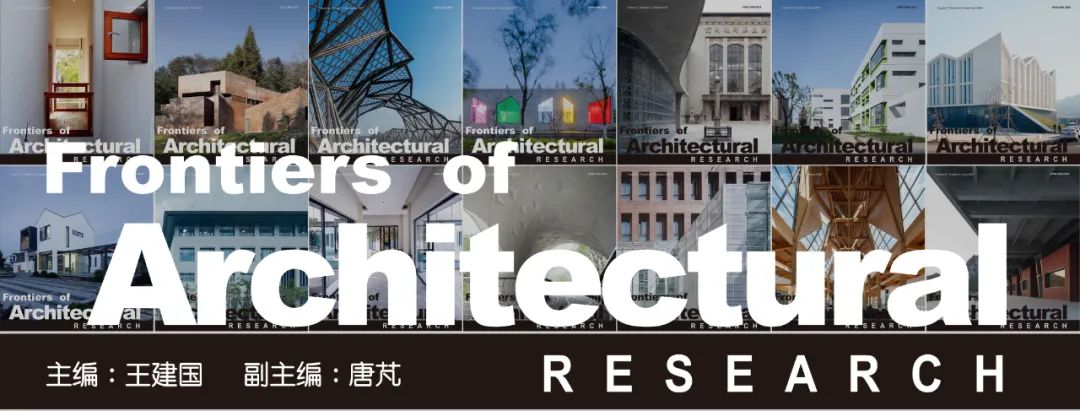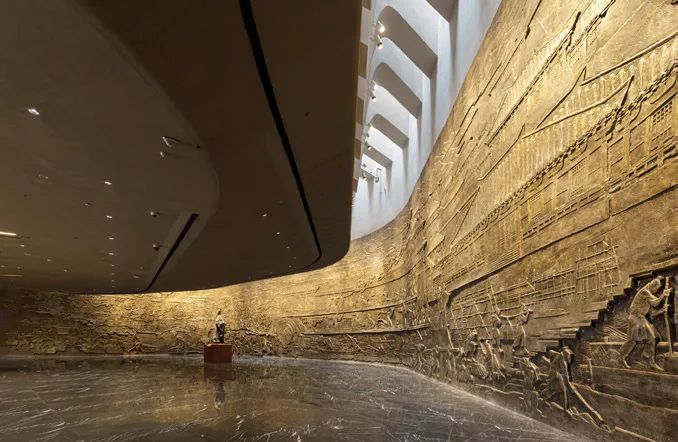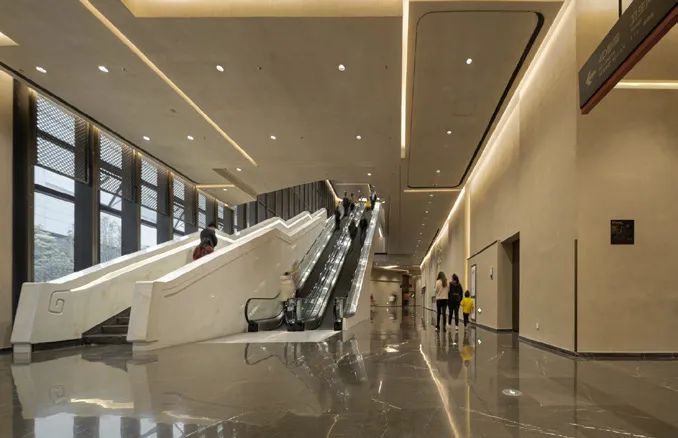
FoAR是由高等教育出版社和beat365体育亚洲官方网站联合主办的全英文学术期刊
建筑学 / 城乡规划 / 风景园林
本刊已被 A&HCI / CSCD / Scopus / DOAJ / CSTPCD 收录
FoAR
2024年第一期已上线

FoAR
2024
新刊上线
Frontiers of Architectural Research 是由高等教育出版社和东南大学联合主办的全英文学术期刊,是教育部重点支持的前沿系列(Frontiers)学术期刊中的一本。已被A&HCI收录。本刊于2012年创刊,2022年起改为双月刊(一年六期)。收录论文内容覆盖但不限于建筑设计及其理论、建筑科学及技术、城市研究、风景园林、建筑历史及遗产保护、绿色低碳建筑等研究领域。是一本全球发行并可开放获取(Open Access)的期刊。
Frontiers of Architectural Research优先发表创新突出、科学性和技术性强的研究论文,特定研究领域中的综述性文章和案例分析,采用严格科学方法和使用前沿技术进行研究的论文,同时也欢迎探讨建筑社会属性的高水平论文。按照国际惯例,对所有论文进行严格地同行评议并只接受英文投稿。
Frontiers of Architectural Research / FoAR建筑学研究前沿Volume 12 / Issue 1 / February 2024Pages 1-218
本期共12篇文章,全部通过严格的同行评议,内容和质量均符合本刊的定位。刊中收录论文的来源分别为:土耳其、墨西哥、伊朗、波兰、中国、丹麦、韩国、马来西亚、越南、西班牙、印度、印度尼西亚各1篇。
▼Peer Review Under Responsibility of Southeast University东南大学负责同行评议
Pages 1-20
From “prototype” to “model”: Architectural and spatial development of Block A (1924–1945) of Istanbul's Heybeliada Sanatorium
Deniz Avci-Hosanli (a)*, Cansu Degirmencioglu (b)
(a) Department of Interior Architecture and Environmental Design, Izmir University of Economics, Izmir 35330, Turkey
(b) TUM School of Engineering and Design, Department of Architecture, Technical University of Munich, Munich 80333, Germany
Pages 21-36
Understanding the neighborhoods’ in-between spaces on spatial perception, social interaction, and security
Lizeth Félix, Mariel Organista*
Autonomous University of Baja California, Ensenada 22860, Mexico
Pages 37-56
Cognitive-emotional feasibility of the effect of visual quality of building form on promoting the sense of place attachment (Case study: Cultural iconic buildings of Iran's contemporary architecture)
Narmin Ariannia (a)(b), Negar Naseri (a)(b), Mansour Yeganeh (a)(b)*
(a) Digital Architecture and Artificial Intelligence Lab, Department of Architecture, Tarbiat Modares University, Tehran, Iran
(b) Architectural Design, Modeling and Fabrication Lab, Department of Architecture, Tarbiat Modares University, Tehran, Iran
Pages 57-78
Geometric investigation of entrance proportions of houses from the Qajar to the beginning of the early Pahlavi in Dezful City (1789–1979)
Raziyeh Rezadoost Dezfuli (a), Mohammad Mehrakizadeh (b), Behnaz Safar Ali Najar (b), Hassan Bazazzadeh (a)*, Mohammadjavad Mahdavinejad (c)(d)
(a) Department of Architecture, Poznan University of Technology, 61-131 Poznan, Poland
(b) Department of Architecture and Urban Planning, Jundi Shapur University of Technology, Dezful, Iran
(c) College of Engineering and Architecture, University of Nizwa, 616 Birkat Al Mawz, Oman
(d) Department of Architecture, Faculty of Art and Architecture, Tarbiat Modares University, Tehran, Iran
Pages 79-96
Associative cultural landscape approach to interpreting traditional ecological wisdom: A case of Inuit habitat
Peng Zhang*, Shuai Li
Department of Landscape Architecture, College of Architecture and Urban Planning, Tongji University, Shanghai 200092, China
Pages 97-111
Contemplative neuroaesthetics and architecture: A sensorimotor exploration
Zakaria Djebbara (a)(b)*, Juliet King (c)(d), Amir Ebadi (e), Yoshio Nakamura (f), Julio Bermudez (g)
(a) Department of Architecture, Design, Media, and Technology, Aalborg University, Aalborg, Denmark
(b) Biopsychology und Neuroergonomy, Technical University Berlin, Berlin, Germany
(c) Art Therapy Department, The George Washington University, Washington DC, United States
(d) Department of Neurology, Indiana University School of Medicine, Indianapolis, United States
(e) Dellustration, Washington DC, United States
(f) Pain Research Center, Division of Pain Medicine, Department of Anesthesiology, University of Utah School of Medicine, Utah, United States
(g) School of Architecture and Planning, The Catholic University of America, Washington DC, United States
Pages 112-126
Exploring the relationship-oriented spaces of social networks and depressive symptoms among older adults
Yongming Yang, Heejoon Whang*
Department of Architecture, Hanyang University, Seoul 04763, Republic of Korea
Pages 127-143
Evolution of the “ancient Kedah”: A study on urban forms at Sungai Batu Archaeological Complex (SBAC), Bujang Valley, Kedah, Malaysia
Mohd Hasfarisham Abd Halim (a)*, Naizatul Akma Mohd Mokhtar (b), Nor Khairunnisa Talib (c), Shyeh Sahibul Karamah Masnan (c), Ahmad Fadly Jusoh (c), Mokhtar Saidin (a)
(a) Kedah, Malaysia
(b) Universiti Utara Malaysia, Kedah, Malaysia
(c) Universiti Sains Malaysia, Penang, Malaysia
Pages 144-163
Relationship between land use and user's behavior along the street: A case study of Da Nang City, Viet Nam
Duy Thinh Do (a)*, Duy Thao Do (b)
(a) Faculty of Civil Engineering, Ho Chi Minh City University of Technology and Education (HCMUTE), Ho Chi Minh City 71307, Viet Nam
(b) School of Computing, Korea Advanced Institute of Science and Technology, Daejeon 34141, Republic of Korea
Pages 164-183
Reuse of port industrial heritage in tourist cities: Shipyards as case studies
María J. Andrade*, Eduardo Jiménez-Morales, Rachel Rodríguez-Ramos, Pablo Martínez-Ramírez
Department of Art and Architecture, School of Architecture, Malaga University, Malaga 29013, Spain
Pages 184-200
Multi-objective method of selecting performance-based local climatic zones using binomial logistic regression in warm and humid climate
G.R. Madhavan*, Dorairaj Kannamma
Department of Architecture, National Institute of Technology, Tiruchirappalli, Tamil Nadu 620015, India
Pages 201-218
An integrated computational method for calculating dynamic thermal bridges of building facades in tropical countries
Miktha Farid Alkadri (a)*, Muhammad Rafif Cahyadi Agung (a), Francesco De Luca (b)
(a) Research Cluster of Architectural Sciences and Building Technology, Department of Architecture, Faculty of Engineering, Universitas Indonesia, Depok 16425, Indonesia
(b) Department of Civil Engineering and Architecture, Tallinn University of Technology, Tallinn 19086, Estonia
在线浏览本期全部文章可扫描下方二维码

封面介绍
南昌海昏侯国遗址博物馆(南昌)

遗址博物馆的设计以考古研究为依据, 以遗产价值为导向,以真实性、完整性、永续传 承、多方受益四项原则为指导,遵循世界遗产保护 公约与遗址保护规划中确立的对场地原有地形地貌 进行“整体保护”与“最小干预”原则,最大限度 与遗址环境的岗地、水系及反映先民生活、生产的 农耕环境相协调,通过地形学设计路径,塑造大地 景观,将博物馆形体空间复归于大遗址的风土地脉 中。遗址博物馆综合容纳了展示陈列、文化交流、 文物库藏、考古研究、管理服务、后勤设备六大板 块功能;通过嵌藏于地形并喻显汉文化特征的“虬 龙潜野”形态和分区清晰、动线流畅的空间组织, 为海昏侯国遗址与文物的展示、馆藏、研究和交流 提供设施先进、功能完备的一流场馆,为中华传统 文化的保护、传承和光扬构筑又一处标志性、开放 性的公益场所。




项目名称:南昌汉代海昏侯国遗址博物馆(南昌)
项目地点:中国 江西 南昌
建成时间:2020 年
基地面积:118802 ㎡
建筑面积:39250 ㎡
设计单位:东南大学建筑设计研究院有限公司
设计主创:张彤
设计顾问:齐康
设计团队:袁玮、严希、李宝童、张四维
建筑摄影:姚力
E N D
本文图片版权归原作者及来源机构所有想要转载本期推送请后台留言申请授权
![]()
期刊联络
高等教育出版社: 010-58556484
东南大学:025-83795543
英文期刊交流QQ群:21608832
在线投稿
刊物主页
http://www.sciencedirect.com/science/journal/20952635http://journal.hep.com.cn/foar


